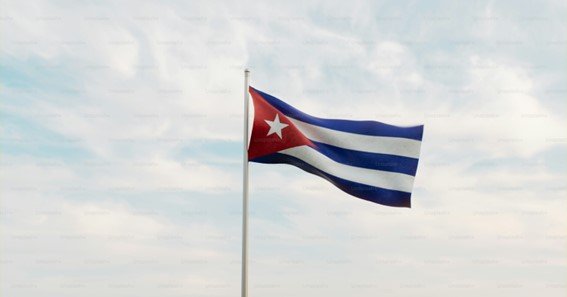The Cuba flag stands as a testament to the nation’s rich history and enduring quest for independence. Its design, steeped in symbolism, reflects the aspirations and resilience of the Cuban people.
Historical Origins of the Cuba Flag
In 1849, Cuban poet Miguel Teurbe Tolón and Venezuelan-born Cuban patriot Narciso López designed the flag in New York City. Their creation featured three blue stripes, two white stripes, a red equilateral triangle at the hoist, and a white five-pointed star centered within the triangle.
This design was first hoisted in the city of Cárdenas on May 19, 1850, during an attempt to liberate Cuba from Spanish rule.
Symbolism Embedded in the Flag’s Design
- Blue Stripes: Represent the three original departments into which Cuba was divided: Occidental, Central, and Oriental.
- White Stripes: Symbolize the purity and justice of the patriotic cause.
- Red Triangle: Reflects the blood shed in the pursuit of freedom and the strength of the people.
- White Star: Known as “La Estrella Solitaria” (The Lone Star), it signifies independence and freedom.
Adoption and Evolution of the Flag
After several failed attempts to gain independence, the flag was officially adopted on May 20, 1902, when Cuba became a republic. It has remained unchanged since, even after the Cuban Revolution of 1959, symbolizing continuity and national identity.
The Flag’s Role in Cuban Culture and Identity
The Cuban flag is more than a national emblem; it is a symbol of pride, unity, and resilience. It is prominently displayed during national holidays, cultural events, and international representations, serving as a constant reminder of the nation’s history and the enduring spirit of its people.
FAQ
-
When was the Cuban flag first adopted?
- The Cuban flag was officially adopted on May 20, 1902.
-
Who designed the Cuban flag?
- The flag was designed by Cuban poet Miguel Teurbe Tolón and patriot Narciso López in 1849.
-
What does the red triangle on the flag represent?
- The red triangle symbolizes the blood shed in the pursuit of freedom and the strength of the people.
-
Why is there a white star on the Cuban flag?
- The white star, known as “La Estrella Solitaria,” signifies independence and freedom.
-
Has the design of the Cuban flag changed since its adoption?
- No, the design has remained unchanged since its official adoption in 1902.










